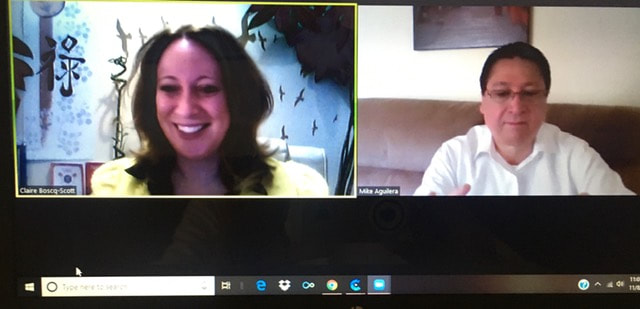How To Do Effective Video Calls
If you are conducting or as a participant
Your equipment matters, especially audio. You can adjust with problems in video, but even small audio glitches can cause problems. In your calls, proactively ask the attendees if your audio is OK.
Wearing earbuds or headset can help avoid echoing. Not just room echo also so the audio voice is not picked up while talking and bleed through the audio. When you talk the listener’s audio projects your voice from their computer speaker which can be sent back to you from the their computer microphone. Hence an echo.
Mute when you're not talking. Background noise can create distractions.
Keep everyone’s microphone mute until they signal to speak.
Video calls are a huge improvement over audio-only calls.
The main reason is that you get to see the faces of the people you're talking to.
Use gallery mode. Two common modes are speaker-mode, where whoever is currently speaking takes up the full screen; and gallery-mode, where every participant is visible in their own window. Gallery mode is better because you’re able to see the faces of not just who's talking, but also the reactions of everyone else.
Don't put a bright light behind you. if you have a bright light behind you, your face will be a blob. Also, if you have a window behind you, you'll probably need to close the curtains if it's daylight. It's wise to check your video at the start of the meeting to see how others see you and adjust the lighting if you can, so they can see your face properly.
Avoid movement. Movement in your video frame will draw everyone's attention. This can be a good thing, if you're waving a hand signal, however beware of movement that doesn't mean anything. A fan behind you can be remarkably distracting. It's best to switch off the video if you can't keep the camera stable, such as in a moving vehicle, or if the laptop is actually on top of your lap.
Use the chat.
Most video-conferencing tools have a chat feature that you can use during the call.
This gives a useful second channel for remarks, questions.
Don't hide children and pets. Nobody should be embarrassed if a child comes in wanting attention and you have to step away for a short while to deal with them. Everyone knows you’re at home, we shouldn't try to pretend we're in some fancy office.
Drop video if bandwidth is an issue. Video is important, but audio matters more. If you're low on bandwidth and the audio is suffering, try turning off video. Audio-only is inferior, but better than nothing.
Don't talk over people. If two people talk at once, then you can't hear either of them. If it happens, give way. Often a hand signal can communicate this quickly. (This clear problem with over-talking is a benefit of video calls.)
If your connection is dodgy, use a phone for audio. Sometimes the internet connection is unreliable, and you find yourself getting dropped out in the middle of the call. If this starts happening, it can be useful to join by phone for the audio, and just use the internet connection for video and chat.
Spend some time to explore your tools It's worth setting aside some time to get familiar with how your video conferencing software works. Make sure you know how to easily mute and unmute. Explore things like chat windows and how they work. If lots of people are new, make sure you have a session to show people how they work.
Record the meeting to help those that could not be on the call and can catch what they missed.
If you do record the video, it's usually wise to ask everyone for their consent first.
Most of all ...have fun and be yourself.
Use the chat.
Most video-conferencing tools have a chat feature that you can use during the call.
This gives a useful second channel for remarks, questions.
Don't hide children and pets. Nobody should be embarrassed if a child comes in wanting attention and you have to step away for a short while to deal with them. Everyone knows you’re at home, we shouldn't try to pretend we're in some fancy office.
Drop video if bandwidth is an issue. Video is important, but audio matters more. If you're low on bandwidth and the audio is suffering, try turning off video. Audio-only is inferior, but better than nothing.
Don't talk over people. If two people talk at once, then you can't hear either of them. If it happens, give way. Often a hand signal can communicate this quickly. (This clear problem with over-talking is a benefit of video calls.)
If your connection is dodgy, use a phone for audio. Sometimes the internet connection is unreliable, and you find yourself getting dropped out in the middle of the call. If this starts happening, it can be useful to join by phone for the audio, and just use the internet connection for video and chat.
Spend some time to explore your tools It's worth setting aside some time to get familiar with how your video conferencing software works. Make sure you know how to easily mute and unmute. Explore things like chat windows and how they work. If lots of people are new, make sure you have a session to show people how they work.
Record the meeting to help those that could not be on the call and can catch what they missed.
If you do record the video, it's usually wise to ask everyone for their consent first.
Most of all ...have fun and be yourself.
For additional information and an advanced technique tip on
video eye movement visit:
http://www.MikeAguilera.com/persuasive-zoom-video-calls
video eye movement visit:
http://www.MikeAguilera.com/persuasive-zoom-video-calls



